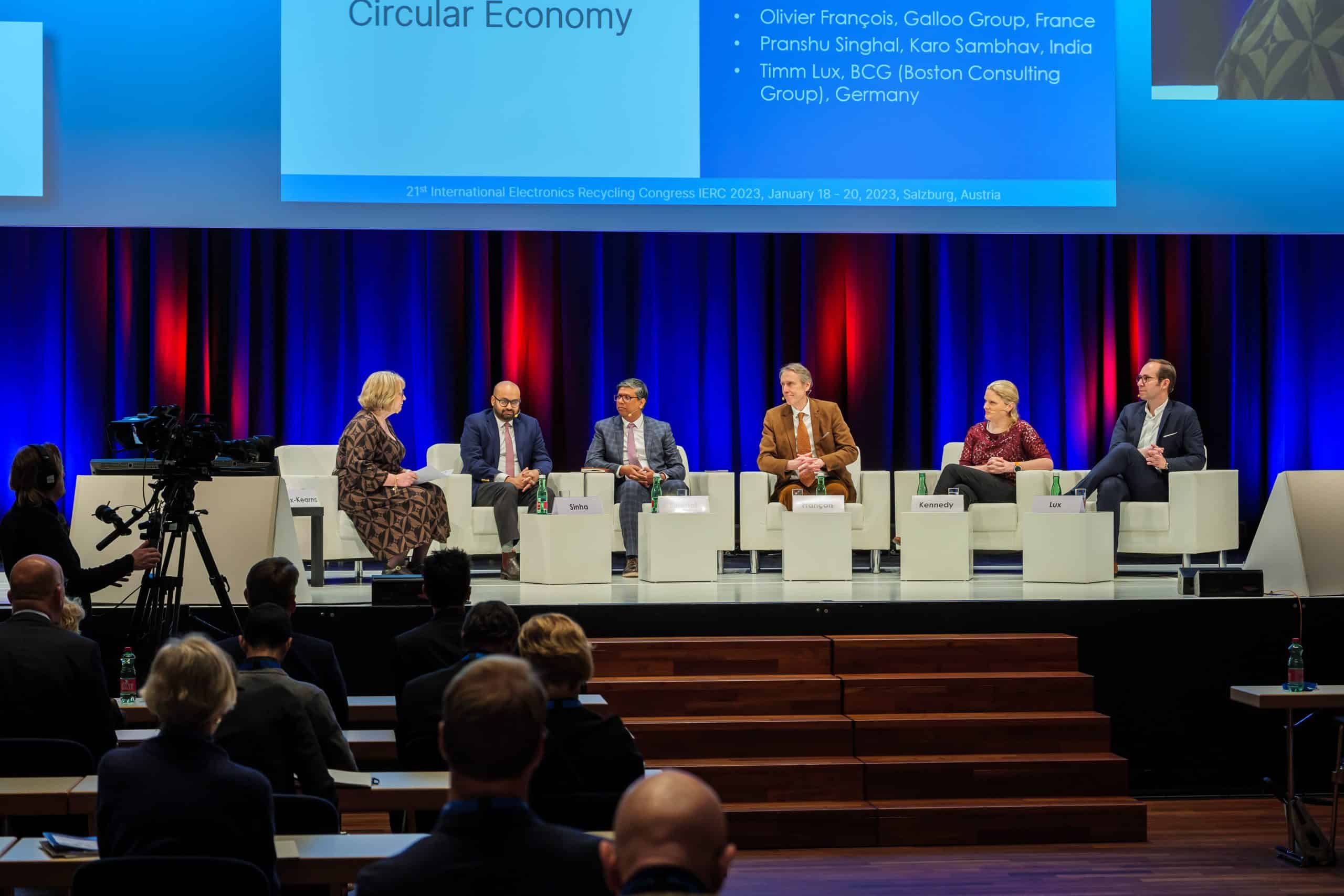
CAROLINE KENNEDY, DIRECTOR CLIMATE & CIRCULARITY AT LOGITECH
‘How do you incorporate circularity in your processes and products? At Logitech, circularity is no longer limited to the sustainability team. It’s all over the company. It’s everybody’s responsibility, from design to sales and beyond. Today more than 50% ofour products have recycled content,
whereas five years ago the use of recyclables was limited to the packaging. Our rule is to use recycled plastics wherever possible. ‘When it comes to design for recycling you need leadership. You’ve got to make it a top business priority. That’s why at Logitech we approach circularity similarly to how we approach product innovation. It’s part of innovation. ‘The circular economy is work in progress. At Logitec we’re making important steps but we’re certainly not there yet. Awareness is growing: big retailers want to know where the materials in the devices they sell come from. In the past three years we’ve had more questions on this that in the previous ten years.’
KUNAL SINHA, GLOBAL HEAD OF RECYCLING AT GLENCORE
‘Circularity is not driving itself. Someone – all of us – have to drive it. Yes, we’re in this together. Having said that, we will all agree that collection is
a crucial factor in making circularity happen. How do you get proper collection? By proper regulation. ‘Glencore collects in more than 40 countries but we don’t have facilities in all of those places so at some point we will have to move material around the world.’
OLIVIER FRANÇOIS, MARKET DEVELOPMENT OFFICER AT GALLOO RECYCLING
‘At Galloo, we were busy with circularity long before the word was invented. In the past 25 years we’ve recycled 400 000 tonnes of plastics for end
users in all kinds of industries. The circular economy works at a global level as long as free trade is guaranteed. But now we’re seeing the EU doing
their best to keep materials within Europe’s borders, frustrating circularity rather than supporting it. We send our recycled plastics to where they’re
needed, where new products are made, and that’s China. ‘Don’t get me wrong, we do advocate recycling within Europe. But at the same time we advocate free trade of recycled materials. ‘Our relationship and understanding with carmaker Renault, one of our customers, goes back a long time. I
remember some 25 years ago very few OEMs were interested in recycled polymers but Renault was. ‘At Galloo, we’ve been working on improving separation and the quality of polymers for 40 years. Today we make the cleanest plastics possible. Because regulators force us and because customers demand it. But now something incredible has happened: Renault wants more of a dirty looking plastic pellet to make the interior of a new model less shiny and to look more rugged.’
PRANSHU SINGHAL, CIRCULAR ECONOMY ADVISOR AT KARO SAMBHAV
‘In India, too, the circular economy is coming to the boil, thanks to extended producer responsibility schemes introduced some six years ago. Before
that collecting and processing was done at the lowest possible cost. Now it’s more formalised with 30% recycled content in packaging, a good driver. ‘For good circularity you need proper collection, knowledge of what happens with the materials – and you’d want some money back.’
TIMM LUX, ASSOCIATE DIRECTOR AT BOSTON CONSULTING GROUP (BCG)
‘The circular economy is hot and unstoppable. We’re having more and more clients knocking at the door begging “please help us to become
more circular”. ‘Not so long ago my family had no idea what my job was. Now, they think “cool, he’s working in recycling.” ‘We are currently working on a project where we connect a big OEM with a recycler to see how they can help each other develop better understanding and better circularity. They had never done that before. What we learn from this is that connection is crucial to get true circularity.’
THE TALE OF TWO CITIES IERC2023
also witnessed an interesting presentation by Nigel Mattravers, who works for Alba Integrated Waste Solutions (Hong Kong), shining a light on e-scrap collection programmes in Hong Kong and Singapore. Singapore and Hong Kong are similar ‘city states’ in that they are densely populated, their citizens have high purchasing power, and they have adopted a ‘high tech’ way of life. ‘Both cities recognised their responsibilities in managing
their e-waste and both adopted the producer responsibility scheme approach which basically says suppliers of e-waste should pay for post consumer management,’ said Mattravers. ‘Both cities implemented comprehensive legislation to control the management of the e-waste created
by their respective populations and businesses.’ Hong Kong recognised that there was an insufficient capacity in the local market and that the existing businesses were reluctant to spend the capital expenditure necessary to create a modern treatment facility. ‘The Hong Kong government therefore elected to go to the international market for a design, build, operate and transfer contract which would include a state-ofthe-art processing plant,’ Mattravers explained. ‘The contract included door-to-door collection of certain e-wastes that were regulated under the legislation.’
Singapore, which has even less available land than Hong Kong, determined there was sufficient existing treatment capacity and therefore no need for the government to build its own processing facility. ‘It adopted a more popular solution for many jurisdictions, by creating a producer responsibility organisation for collection, classifying, and arranging the processing of the collected e-waste. The Singapore scheme also includes
Source: recyclinginternational.com | March/April 2023